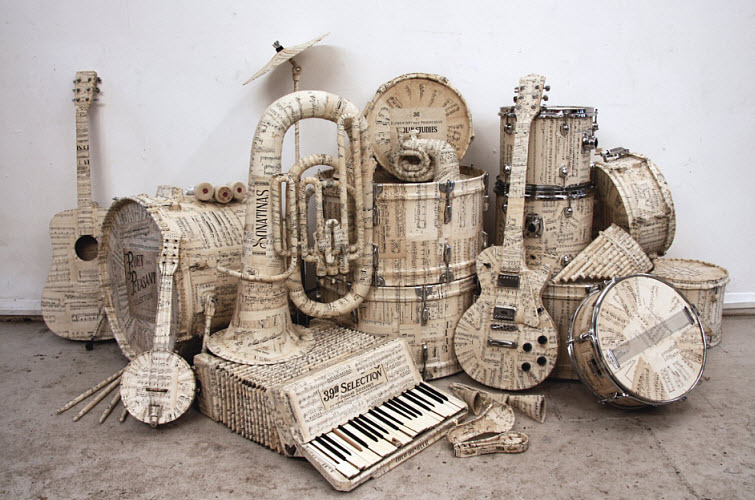Better to hear once than read seven times
Most of the articles about music and musical notation suffer from a big disadvantage: there is a text description, say, a seventh chord from a triad, but there is no sound to hear this difference.

A good example is the interactive mini-textbook on music theory from Ableton.
The articles of the textbook briefly describe the main aspects of the composition from rhythm to harmonization. Moreover, on each page there is an interactive editor where you can not only listen to the example, but also try to change something and immediately check the result.
')

This tutorial is a whole web application that was developed by a serious team of programmers. Unfortunately, this approach is not applicable for most articles on thematic sites or posts in forums.
Ideally, it would be enough to have it possible to insert into the text a link that opens an interactive editor with the discussed piece of melody. Well, the editor's screenshot was made using standard tools. Pictures and links can be inserted in any blogs, emails, etc.
Many web sequencers provide this feature. For example, Flat.io even provides an API for embedding an editor in a page using an iframe (although this is useless for most forums because the iframe tag is not allowed in messages)

Unfortunately, common services provide only the stave. Although most modern music is written in piano roll (see Ableton Live, FL Studio, Pro Tools), not in classical notation.
It is possible to use RiffShare . The service allows you to set a melody (or import via .mid) and get a regular link to it:

The result can be inserted into any blog, including even in a post or a comment on Habré. Here’s what the article on harmonization from the Ableton textbook might look like:
RiffShare is an open source development that uses WebAudioFont and works in any browser on any platform. It allows you to exchange wide-format musical fragments (see examples on the service page) from jazz to trance .

A good example is the interactive mini-textbook on music theory from Ableton.
The articles of the textbook briefly describe the main aspects of the composition from rhythm to harmonization. Moreover, on each page there is an interactive editor where you can not only listen to the example, but also try to change something and immediately check the result.
')

This tutorial is a whole web application that was developed by a serious team of programmers. Unfortunately, this approach is not applicable for most articles on thematic sites or posts in forums.
Is it any easier?
Ideally, it would be enough to have it possible to insert into the text a link that opens an interactive editor with the discussed piece of melody. Well, the editor's screenshot was made using standard tools. Pictures and links can be inserted in any blogs, emails, etc.
Many web sequencers provide this feature. For example, Flat.io even provides an API for embedding an editor in a page using an iframe (although this is useless for most forums because the iframe tag is not allowed in messages)

Unfortunately, common services provide only the stave. Although most modern music is written in piano roll (see Ableton Live, FL Studio, Pro Tools), not in classical notation.
Working example with Piano Roll
It is possible to use RiffShare . The service allows you to set a melody (or import via .mid) and get a regular link to it:

The result can be inserted into any blog, including even in a post or a comment on Habré. Here’s what the article on harmonization from the Ableton textbook might look like:
Chords
“Mary Had a Little Lamb”
This is a famous children's song with a recognizable simple melody. Here is a monophonic melody in the key of F major.
open http://tinyurl.com/y9k93o3r
But if we harmonize the melody with several chords, we will have a full-fledged composition. This example shows a simple progression (sequence) of chords. In most styles of music, chord progression is used to create tension or finality, etc. For this, chords can both coincide with the main key and resist it.
http://tinyurl.com/y8r9xabu
How are chords used?
We added the trivia in F major and in C major. But why did we add these particular chords?
Note the coincidence of the melody notes with the notes of the accompanying chords. For example, in the first measure, the notes of the Fa and La melodies are included in the F-major major. The notes of Sol are not part of this triad, but they are used in the melody as a “connection” between the Fa and the La.
Try experimenting by changing the chords in the composition.
RiffShare is an open source development that uses WebAudioFont and works in any browser on any platform. It allows you to exchange wide-format musical fragments (see examples on the service page) from jazz to trance .
Source: https://habr.com/ru/post/331096/
All Articles

